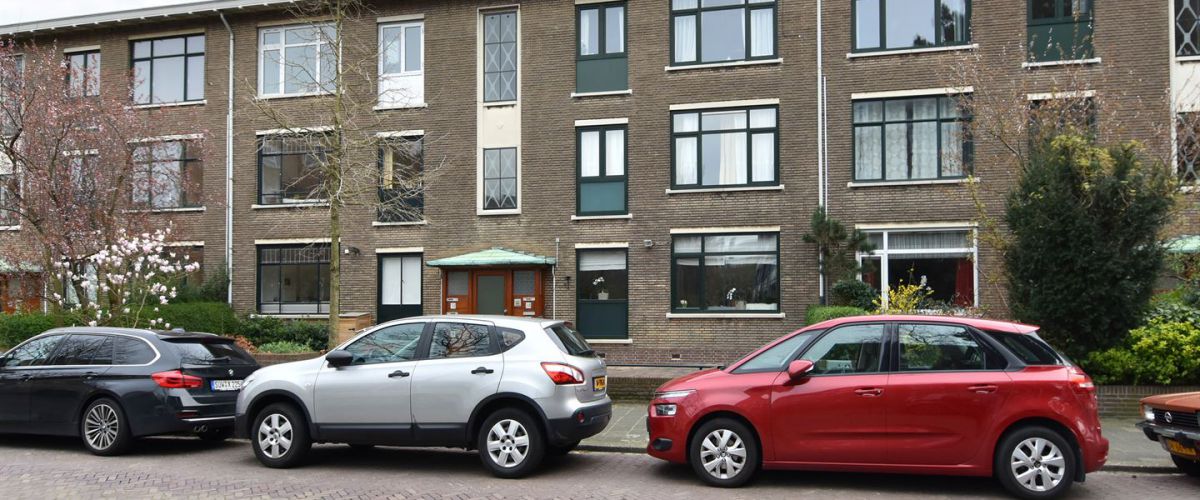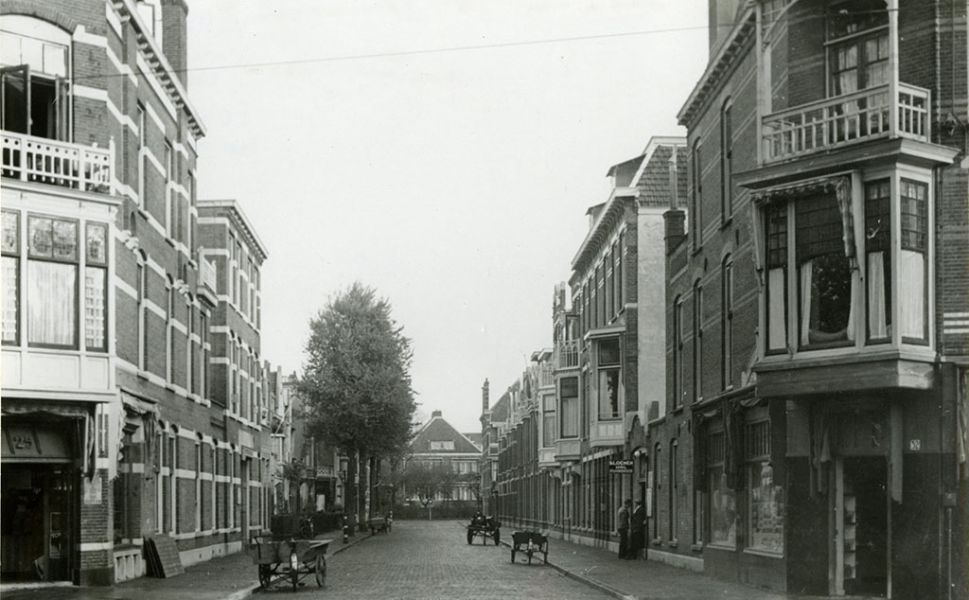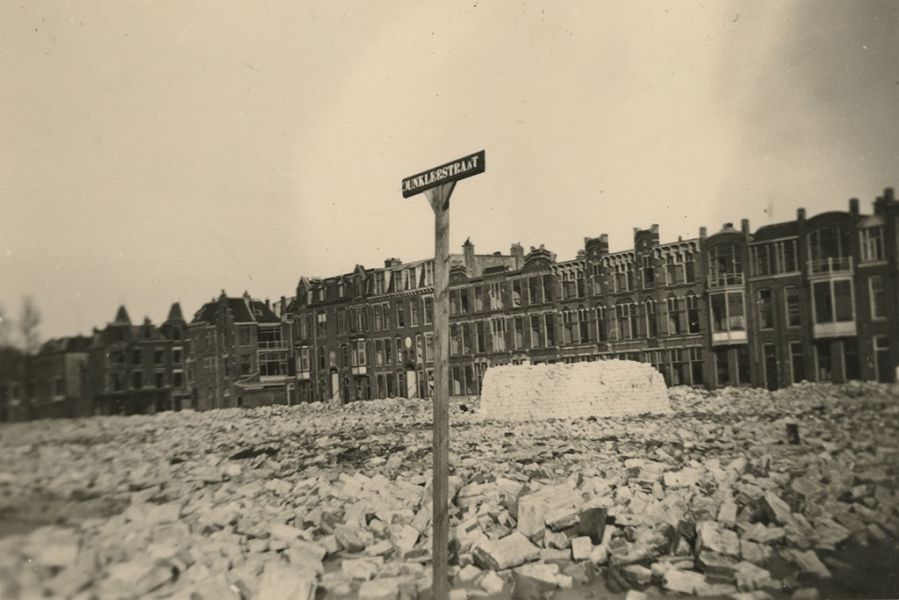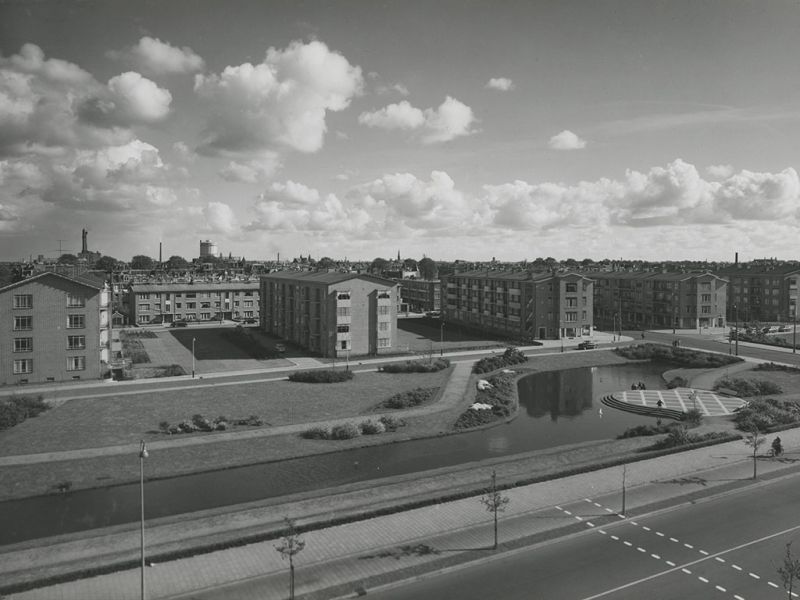Lübeckstraat is greener these days
During World War II, a wide anti-tank ditch was constructed here as part of the Atlantic Wall. Before that, Lübeckstraat was lined on each side with a long row of distinguished detached houses with private back gardens.
In the post-war reconstruction plans for the city produced by city architect W.M. Dudok (1884-1974), Lübeckstraat survived but was given a completely new look. On one side, new apartment blocks designed by Jan Wils stood at right-angles to the road. By making this change, Dudok aimed to blur the distinction between public and private space: private gardens concealed behind houses were replaced by a semi-public area of greenery that flowed seamlessly on into public gardens (the Stadhoudersplantsoen). The consequence of this decision was the permanent disappearance of the streets that lay between Lübeckstraat and today’s President Kennedylaan in the pre-war situation. Verhulststraat was relocated and renamed Verhulstplein, while Dunklerstraat also changed its position.
 Herinneringsroute Atlantikwall Den Haag
Herinneringsroute Atlantikwall Den Haag







